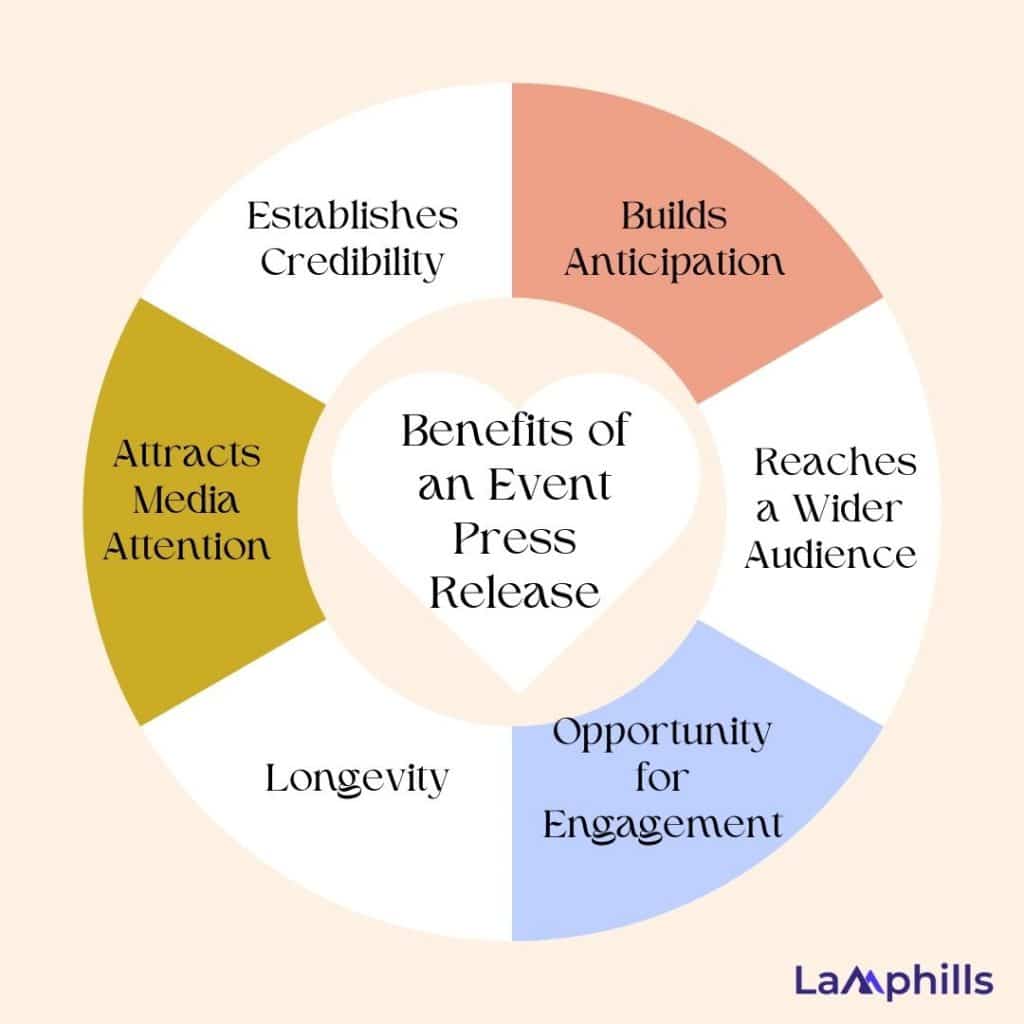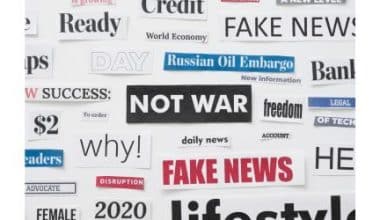Planning an event is a big deal, but getting the word out is just as important. That’s where a press release comes in. But how do you make yours stand out? You’re in luck because I’m sharing the ultimate guide on how to write a press release for an event. From crafting the perfect headline to writing the details, this guide covers it all. Join me as I explore how to write a press release for an event that gets noticed. Trust me, with these expert ideas, you’ll be a pro in no time, so stay with me for some practical tips and free templates to streamline the process. Let’s make your event the talk of the town with an amazing press release.
Key Points
- A professional press release makes you look like the real deal. Media outlets rely on these things for accurate information, so having your event featured screams credibility.
- A good press release can help your event climb the search engine ranks like a superhero. Stuff it with relevant keywords, and people searching for events like yours will find you.
- Consider incorporating multimedia elements to enhance the visual appeal of your press release and make it more engaging.
- Maintaining consistent formatting throughout your press release reinforces a professional image.
- Weaving in quotes from industry leaders, keynote speakers, or event organizers adds credibility and depth to your press release.
Understanding Press Releases for Events
A “Press Release for Events” is a written announcement about an upcoming event. It’s sent to media outlets to get publicity. This document includes essential details like the event’s name, date, location, and purpose. Additionally, it tells journalists and editors why the event matters. It highlights key speakers, special guests, and unique activities. A good press release for events is clear and to the point, making it easy for media professionals to understand the event’s significance quickly.
When creating a press release for an event, include a catchy headline, a brief introduction, and all the important information in the body. Close with contact details for further inquiries. A press release for events helps spread the word and attract attendees, ensuring the event’s success.
How to Write a Press Release for an Event
Writing a press release doesn’t have to be hard. The key is to keep it clear and short. Here’s a quick tip from my experience: Always start with a strong headline, so you can grab their attention right away. Whether it’s a quote from a notable speaker or a surprising fact about your event, make them want to read more. Let’s break it down, step-by-step.
#1. Start with a Compelling Headline
Your headline is the first impression readers get of your event. It should not only be attention-grabbing but also informative. Use active language and focus on the most unique or exciting aspect of your event. For example, instead of just saying “Annual Charity Event,” you might say “Celebrating 10 Years of Giving: Join Us for Our Annual Charity Gala.”
#2. Write a Strong Lead Paragraph
In the first paragraph, known as the lead, you should answer the key questions: who, what, when, where, and why. This sets the foundation and lets readers know the most important details upfront. It captures the essence of your event in a few sentences to hook the reader and encourage them to read on.
#3. Provide Detailed Event Information.
Expand on the details in the body of your press release. Describe not only what will happen at the event but also why it matters. Also, make use of descriptive language to create a vivid picture for the reader. For instance, describe the activities, performances, or speakers in a way that builds anticipation and excitement.
#4. Include Quotes for Personalization
Quotes add a human element to your press release, so you need to choose insightful quotes that reflect the tone or significance of your event. They could come from organizers, speakers, sponsors, or participants. Also, quotes provide additional context or emotional appeal, making the event feel more personal and inviting.
#5. Provide Valuable Background Information
Sometimes events have a backstory or context that can help journalists understand their significance. Include brief background information about the organization hosting the event, any milestones or achievements related to the event, or broader industry trends it ties into. And so, if your event ties into broader industry trends or community issues, briefly explain how it fits into the larger picture.
#6. Highlight Key Speakers or Performers
People often attend events because of who will be there. Whether it’s a renowned speaker, celebrity guest, or talented performer, emphasize their credentials and what they bring to the event. Mention any awards, achievements, or unique qualities that make them noteworthy and appealing to attendees and media alike.
#7. Include Practical Details
Make it easy for journalists to cover your event by including all necessary logistical information. Provide clear details on location, date, time, registration process, ticket availability (if applicable), and any special instructions for media coverage. This ensures journalists have everything they need to plan their coverage effectively.
#8. Proofreading Before Publishing
Before finalizing your press release, dedicate time to proofreading. Look for spelling and grammar errors, information inconsistencies, and communication clarity. A well-edited press release reflects professionalism and attention to detail, enhancing your credibility with media professionals and readers.
By expanding on these points, you can create a press release that not only informs but also engages and excites its readers, increasing the likelihood of media coverage and attendees interest in your event.

Benefits of an Event Press Release
An event press release is more than just an announcement—it’s a powerful tool for getting attention, building anticipation, and establishing credibility. In the noisy world of events and promotions, a well-written press release can make your event stand out and reach a wider audience. Here are reasons why investing time in a quality press release can significantly boost your event’s success.
#1. Establishes Credibility
In today’s digital age, trust and credibility are everything. When a respected media outlet picks up your press release and covers your event, it’s like a stamp of approval. It validates your event’s importance and showcases your organization’s expertise and reliability. This endorsement can sway hesitant attendees and partners who are on the fence about participating. Moreover, positive media coverage enhances your reputation within your industry or community, opening doors to future opportunities.
#2. Builds Anticipation
Creating rumors is key to any successful event. You can highlight key details like exclusive interviews, behind-the-scenes insights, or sneak previews of event activities. This not only excites potential attendees but also encourages media outlets to dig deeper and cover your event in more detail. By building anticipation early on, you ensure that people are talking about your event long before the doors open.
#3. Attracts Media Attention
Think of a press release as your event’s opening act. It’s designed to catch the eyes and ears in a noisy world. Reporters and media outlets are hungry for compelling stories that resonate with their audience. A well-crafted press release with a catchy headline and a compelling story angle can make journalists sit up and take notice. It’s your chance to shine a spotlight on what makes your event special—whether it’s a unique theme, notable speakers, or exciting activities. By grabbing attention early, you set the stage for broader coverage and public interest.
#4. Reaches a Wider Audience
One of the significant advantages of a press release is its ability to reach a broad and diverse audience. While traditional media outlets like newspapers, magazines, and TV stations remain powerful channels, online platforms and social media have expanded the reach of press releases even further. A well-optimized press release can attract attention from journalists, bloggers, influencers, and potential attendees across geographical boundaries, ensuring your event receives exposure beyond your immediate community.
#5. Longevity
Unlike fleeting social media posts or advertisements, a well-written press release has a longer lifespan. It becomes part of your event’s historical record and can be archived and referenced in the future. This enduring documentation not only preserves the success and impact of your event but also serves as a valuable resource for future marketing efforts. By leveraging the longevity of a press release, you can keep the momentum going even after the event has concluded, maintaining interest and engagement over time.
#6. Opportunity for Engagement
A well-executed press release opens doors for engagement with your target audience and stakeholders. Beyond informing the media, you can leverage your press release to engage directly with potential attendees, sponsors, and community members. Include calls-to-action such as RSVP links, social media handles, or contact information for inquiries. This encourages interaction and allows interested parties to connect with your event easily.
Lamphills Event Press Release Templates
What to Avoid When Making a Press Release for an Event
When writing a press release for an event, clarity, and impact are key. It’s not just about conveying information but also ensuring that the message resonates with your audience. Drawing from firsthand experience in the field, here’s a straightforward guide on what to avoid when creating a press release.
#1. Complex Language
Using jargon or technical terms can alienate readers who are not familiar with industry-specific language. Instead, opt for straightforward language that anyone can understand. For example, rather than saying “synergistic partnerships,” you could say “working together with our partners.” This clarity ensures that your message is accessible and resonates with a wider audience, including journalists who may not be experts in your field.
#2. Ambiguity and Vagueness
Ambiguous statements can leave journalists and readers wondering about the specifics of your event. Provide clear and concrete details such as the date, time, location, and purpose of the event. For instance, instead of saying your event is “transformative,” explain how it will impact attendees or the community. Concrete information helps journalists understand the significance of your event and encourages them to cover it in their stories.
#3. Excessive Length
In today’s fast-paced media environment, journalists appreciate concise information that gets to the point quickly. Limit your press release to essential details, focusing on what makes your event noteworthy. Also, avoid unnecessary background information or lengthy descriptions. A concise press release not only respects journalists’ time but also increases the chances of them reading and using your content.
#4. Lack of Newsworthiness
Journalists are always looking for stories that are timely, relevant, and impactful. Ensure your press release highlights why your event is newsworthy. This could include tying it to current trends, addressing pressing issues, or featuring prominent speakers or participants. Additionally, demonstrating the unique aspects or broader implications of your event makes it more compelling to journalists seeking engaging stories for their audience.
#5. Poor Formatting
Formatting plays a crucial role in the readability of your press release. Use short paragraphs to improve readability and break up information logically. Bullet points can effectively highlight key details such as event features, notable guests, or agenda items. Include contact information at the end for journalists seeking further details or interviews. A well-structured press release makes it easier for journalists to extract information quickly and decide whether to cover your event.
#6. Overly Promotional Tone
While your goal is to promote your event, avoid sounding overly promotional or biased in your press release. Journalists value objective information that allows them to craft their own stories. Focus on presenting facts, such as the purpose and benefits of attending your event, rather than using exaggerated language or making unsubstantiated claims. Providing quotes from credible sources and emphasizing the broader impact of your event can add legitimacy and appeal to journalists.
#7. Neglecting the Audience
Consider who will be reading your press release and tailor your content accordingly. Journalists seek information that is relevant to their audience and aligns with their editorial focus. Research the media outlets or journalists you plan to send your press release to and customize your message to address their interests and needs. Including quotes or testimonials from participants or experts can add a human touch and enhance the appeal of your event to both journalists and their readers.
Is a Press Release Written Before or After an Event?
There are two primary types of press releases related to events: pre-event press releases and post-event press releases. Each serves a distinct purpose and is made to achieve specific goals at different stages of the event lifecycle. Understanding the differences between these types of press releases and their strategic use can significantly enhance the visibility and impact of an event.
#1. Pre-event Press Release
- Purpose: Pre-event press releases are issued before an event takes place. They aim to create anticipation, generate interest, and inform the media and the public about the upcoming event.
- Content: These press releases typically include details such as the purpose of the event, date, time, location, key speakers or performers, important announcements or launches expected at the event, and any other relevant information that would entice journalists and the audience to attend or cover the event.
#2. Post-event Press Release
- Purpose: Post-event press releases are issued after an event has taken place. They summarize the event’s highlights, key outcomes, and any significant achievements or announcements made during the event.
- Content: These press releases often include a summary of what happened at the event, key quotes from speakers or participants, highlights of any newsworthy moments or announcements, attendance figures if applicable, and details on where additional information or resources related to the event can be found.
Related Articles
Media Pitch vs. Press Release: How I Differentiate Them.
Not All Press Is Good Press: Exploring the Impact of Different Types of Press
The Role and Importance of Social Media in Public Relations






